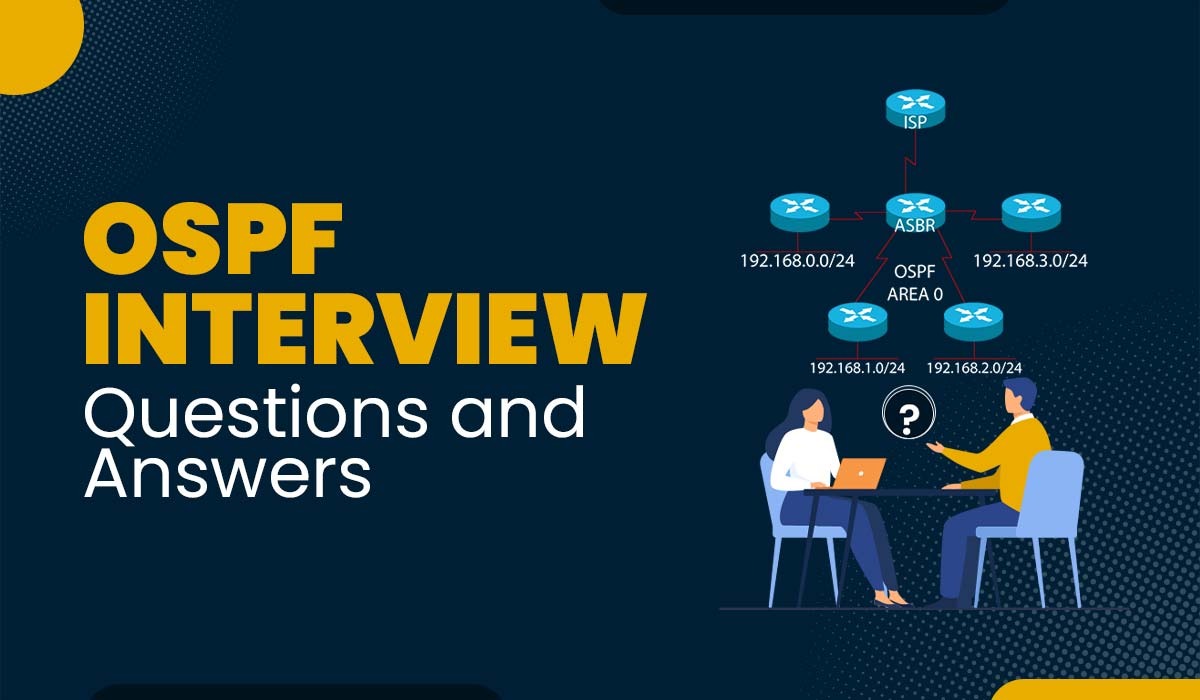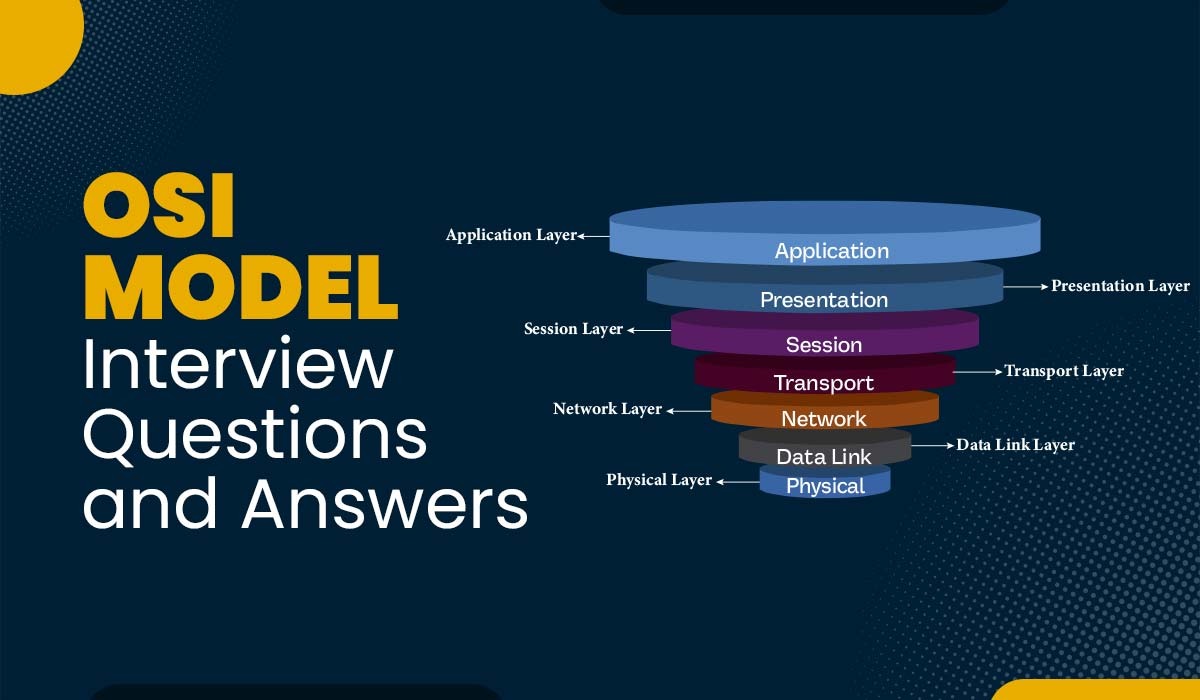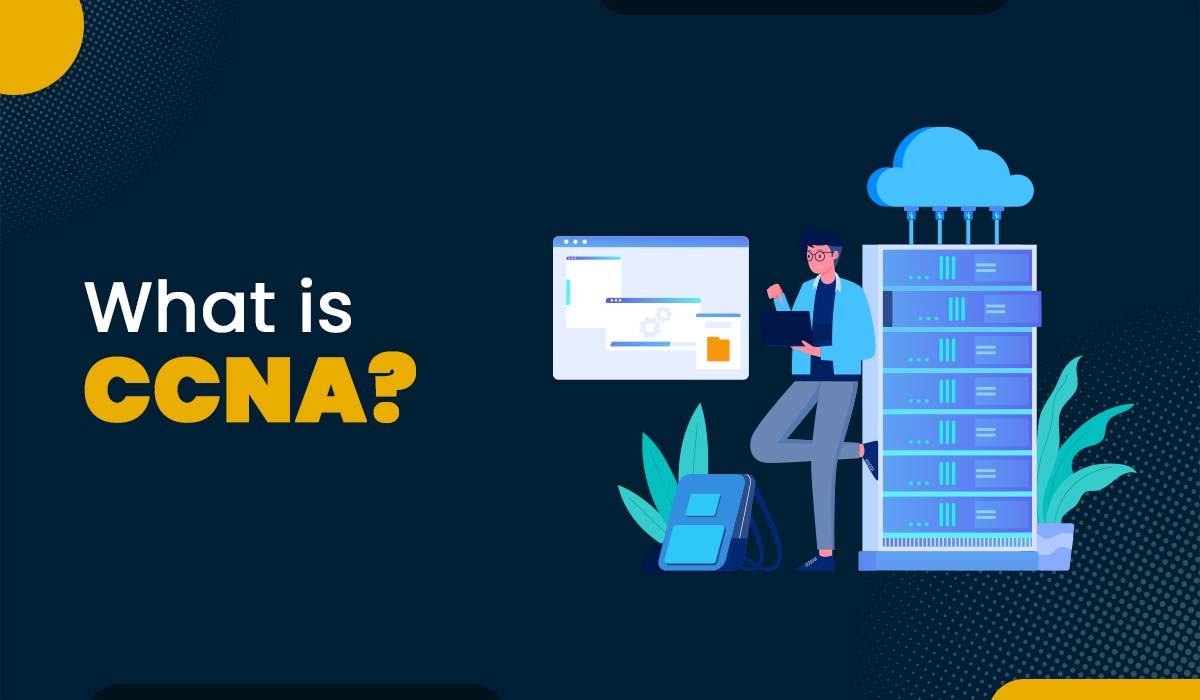Top OSPF Interview Questions and Answers

OSPF is one of the most important topics in Networking and IT domain interviews. Every employer wants a candidate who has deep knowledge of OSPF protocol, and that is why we came up with the most asked OSPF interview questions. These OSPF interview questions and answers are very carefully curated by some of the leading minds in this domain to help freshers and experienced candidates crack the OSPF interviews. So, no need to get nervous before any interview anymore as we have the perfect questions that will most likely be on your interviewers’ list. You can also get OSPF interview questions and answers pdf at the last of this blog. Check out our upcoming Online CCNA Training OSPF (Open First Short Path First) is a link-state routing protocol used to determine the optimum path for forwarding network traffic for which it uses the Shortest Path First (SPF) algorithm. It is widely used in enterprise networks and service provider networks due to its scalability, fast convergence capabilities (adapts quickly to changes), and excellent support for network designs. OSPF is designed as an Interior Gateway Protocol (IGP) to move packets within a large autonomous system or routing domain. With OSPF, networks can increase speed, reliability, and optimal performance. Moreover, it is capable of automatically adapting to changes in network topology and recalculating the best paths if needed which makes it a dynamic routing protocol. Let’s start with OSPF Interview Questions for Freshers. Here is a list of the most asked OSPF interview questions and answers: OSPF stands for Open Shortest Path First. It is a link-state routing protocol that uses the Shortest Path First (SPF) algorithm to find the best path between the source and the destination router. It was developed by Internet Engineering Task Force (IETF). It was developed as an Interior Gateway Protocol (IGP). A protocol has a primary aim to move the packets within a large autonomous system or routing domain. It is a network layer protocol. The term “area” refers to a collection of OSPF routers, networks, and links with the same identification for the area. The router in an area has to keep an operational database of the area it is part of. The area known as the backbone (Area 0) is the center of an OSPF network. The other areas are linked to it, and all communication between the areas has to pass through it. The entire route between regions is carried out through the backbone region. An Autonomous System Boundary Router (ASBR) is a type of router that is capable of running multiple protocols. It also acts as a gateway for the routers that are placed outside the OSPF domain and to the routers too that operate on different protocols. An Autonomous System Boundary Router is capable of importing and translating various protocol routes into OSPF via a process called redistribution. A Designated Router (DR) is used to reduce the number of adjacencies created. A DR has the responsibility of distributing the LSAs to all the other routers. In a broadcast network, a DR is chosen, and all the other routers share their DBD to this DR. In a broadcast network, routers make a request to the DR for an update, to which DR answers with an update. The election between OSPF DR and BDR takes place in the broadcast network or a multiaccess network. The criteria for the selection are as follows: Firstly, the loopback address (highest) is taken into consideration. However, if, in any case, the loopback is not configured, then the active IP address on the router interface is taken into consideration, and the highest active IP address takes it. OSPF uses packets to send and receive requests, ensure delivery of Link-state advertisements and establish & maintain adjacencies. Packets are also used to describe the link-state databases. The OSPF packet types are as follows: • Hello – The Hello packet type is used to discover neighbors, build adjacencies and maintain them. • DBD (Database Description)– is used to determine whether the LSDB between two routers is identical. The DBD is like an overview of LSDB. • LSR (Link-state request) – It is used to request link-state records of a specific type from an OSPF neighbour. • LSU (Link-state update)– This packet sends specific links-state records to those who requested them. This packet is similar to an envelope that has multiple LSAs inside. • LSAck (Link-state acknowledgements)– This packet is used to acknowledge others as OSPF is a very reliable protocol. The default OSPF network type is based on the media used for the connection, and it can be changed independently of the media used. Cisco provides five OSPF network types, as listed in the table below. The term “virtual link” does not refer to a physical connection. In fact, it is an intelligent link that uses the cheapest route connecting both the ABR of the area that is not connected to the backbone region and the backbone ABR of the transit zone. A virtual adjacency along the link is created and routing data will be exchanged. Sometimes, we need to control the advertisement of external routes into an area. This area is called the stub area, and Stub areas are not capable of importing routes external to OSPF. LSAs of Type 4 & Type 5 get filtered from the stub areas. ABR injects a default route into that area in place of external routes. There are 3 restrictions that apply to the OSPF stub area: – Different types of Stub areas are: Like stub areas, the totally stubby area does not receive type4 and type5 LSA from their ABRs. However, they also do not receive type 3 LSAs, and it allows the advertisement of the internal router in that area. The motivation behind NSSA is to allow the OSPF stub area to carry external routes. The external router is imported into OSPF NSSA as Type 7 LSA by ASBR. Now, ABR converts the Type 7 LSA back into Type 5 LSA as Type 7 LSA is not allowed to go into area 0. In Totally NSSA, the Type3 also gets filtered with Type4 & Type5. These are the best OSPF Interview Questions and Answers for Freshers. Let’s move on and see the advanced OSPF Interview Questions for Experienced Candidates. Here is a list of most asked advanced OSPF Interview Questions and Answers. OSPF supports distributing list instructions, but only under certain conditions. It differs from distance vector routing protocols such as the Routing Information Protocol and the Enhanced Interior Gateway Routing Protocol. It is also worth noting that OSPF routes cannot be filtered when they enter the OSPF database. The distribute list in the command merely prevents the information from entering the route. It does not prevent link-state packets from propagating. As a result, the route memory is not preserved in this process. This spread may also damage other routers. It would also assist if you were cautious, as the distribution list in the command must be implemented correctly. Loops are possible if this is not done. This command only applies to the routes of Autonomous System boundary Routers. In OSPF, an acknowledgment is required of every new link state advertisement. This is carried out by sending LS packets. These packets continue to transit until they are acknowledged, and this Link State Retransmit Interval defines retransmissions. The command IP OSPF is used to retransmit the interval and its by default value is 5 seconds. To run OSPF on asynchronous links we require special commands when they do not occur at a certain predetermined time. In this scenario, we can use the async default routing command on the asynchronous interfaces. This allows the router to keep sending updates to other routers with the same interfaces. In OSPF, Area 0 is referred to as the backbone area. In simple words, we can say, all other areas send their transfers through this Area 0. It is not possible to function without this as the entire routing area is distributed through the Area 0. The role of all three are mentioned below: Different types of OSPF are: The steps to change neighbouring ships into adjacency are as follows: Step 1: To create a link, we must make a state request and this link will relay information to packets. Step 2: Then, both routers will send database description packets to each other, and this will ensure that the databases are synchronized. Step 3: Once the database is synchronized, the two routers can be measured as adjacent routers. The advantages of the OSPF summarization are given below: No, in OSPF, it is not possible to assign a number to one party and leave the other party without a number. If you attempt to do this, the OSPF database will become inconsistent, and routes will not be entered into the steering table. OSPF allows two multicast addresses, which are 224.0.0.5 and 224.0.0.6 Cisco IOS Software Release 11.2 is used to change the bandwidth. You can modify this via the OSPF auto-cost-reference bandwidth command under “Router OSPF”. Bandwidth is 100 Mbps by default and OSPF link expenditure is a 16-bit number. Thus, 65,535 is the high price for this change. It is used to add a specified time to the age field of the update, which is important before sharing any link. If not, LSA propagation time will not be allowed. The default value is 1 second and this is more important on low-speed links for some factors. There are two types of OSPF timers: OSPF refers to a loop-free protocol due to the existence of a link-state database. In OSPF, the database provides a full view of the network and prevents the routing loops common in distance vector protocols. OSPF avoids loops by implementing an inter-area loop-free topology, which is why it is known as a loop-free protocol. Following are some of the key attributes of OSPF: These are the most asked OSPF Interview Questions and Answers for Experienced. If you are looking for a PDF with more OSPF interview questions and answers, you should go to – CCNA Interview questions and answers In this blog, we have explained the most important OSPF Interview questions and their answers for freshers as well as experienced professionals for you to go through it and make your concept much stronger. In conclusion, OSPF is an essential topic for freshers and experienced networking professionals preparing for their interviews and its thorough understanding is very important. PyNet Labs has launched another batch of OSPF BGP Training for network engineers to learn OSPF in depth. Along with it you must know what are the question that an interviewer may ask. We hope you liked this article; please give your valuable feedback in the comment box below. Don’t forget to subscribe to our free newsletter for more awesome content. All the best for your interview.Introduction
About OSPF
Basic OSPF Interview Questions and Answers
Q1 – What is the OSPF routing protocol?
Q2 – What is the area in OSPF?
Q3 – What is the Backbone area?
Q4 – What is an Autonomous System Boundary Router ASBR?
Q5 – What is a Designated Router (DR)?
Q6 – How OSPF DR and BDR are elected?
Q7 – What are the OSPF packet types?
Q8 – What are the OSPF network types?
Type Description DR/BDR Field OSPF Hellos Timers Broadcast Default setting on OSPF-enabled Ethernet Links Yes Hello: 10, Wait: 40, Dead: 40 Non Broadcast Default setting on OSPF-enabled Frame Relay main interface or Frame Relay multipoint subinterfaces Yes Hello: 30, Wait: 120, Dead: 120 Point-to-Point Default setting on OSPF-enabled Frame Relay Point-to-Point subinterfaces No Hello: 10, Wait: 40, Dead: 40 Point-to-Multipoint Not enabled by default on any interface type. Interface advertised as a host route. Sets the next-hop address to the outbound interface. No Hello: 30, Wait: 120, Dead: 120 Loopback Default setting on OSPF-enabled loop-back interfaces. Interfaces is advertised as a host route(/32) N/A N/A Q9 – Explain OSPF Virtual Link?
Q10 – Explain the Stub Area and different types of Stub area?
Advanced OSPF Interview Questions and Answers
Q11 – Can you filter the routes using the distribute-list in/out of the command in OSPF?
Q12 – What exactly is the Link State Retransmit Interval? Which command is used to configure it?
Q13 – To run OSPF on asynchronous links do you need any special command?
Q14 – What is the importance of OSPF Area 0?
Q15 – What is the role of topology, routing, and neighbour tables in OSPF?
Q16 – What are the different area types in OSPF?
Q17 – How can the neighboring ships into adjacency be changed?
Q18 – What are the advantages of OSPF summarization?
Q19 – Is it possible in OSPF to allocate a number to one party and leave the other party without a number?
Q20 – What multicast addresses does OSPF allow?
Q21 – How can the reference bandwidth be changed in OSPF?
Q22 – Why is IP-OSPF- transmit-delay used?
Q23 – How many types of OSPF timers are there?
Q24 – Why does OSPF refer to a loop-free protocol?
Q25 – What are the main attributes of OSPF?
OSPF Interview Questions and Answers PDF
Conclusion







